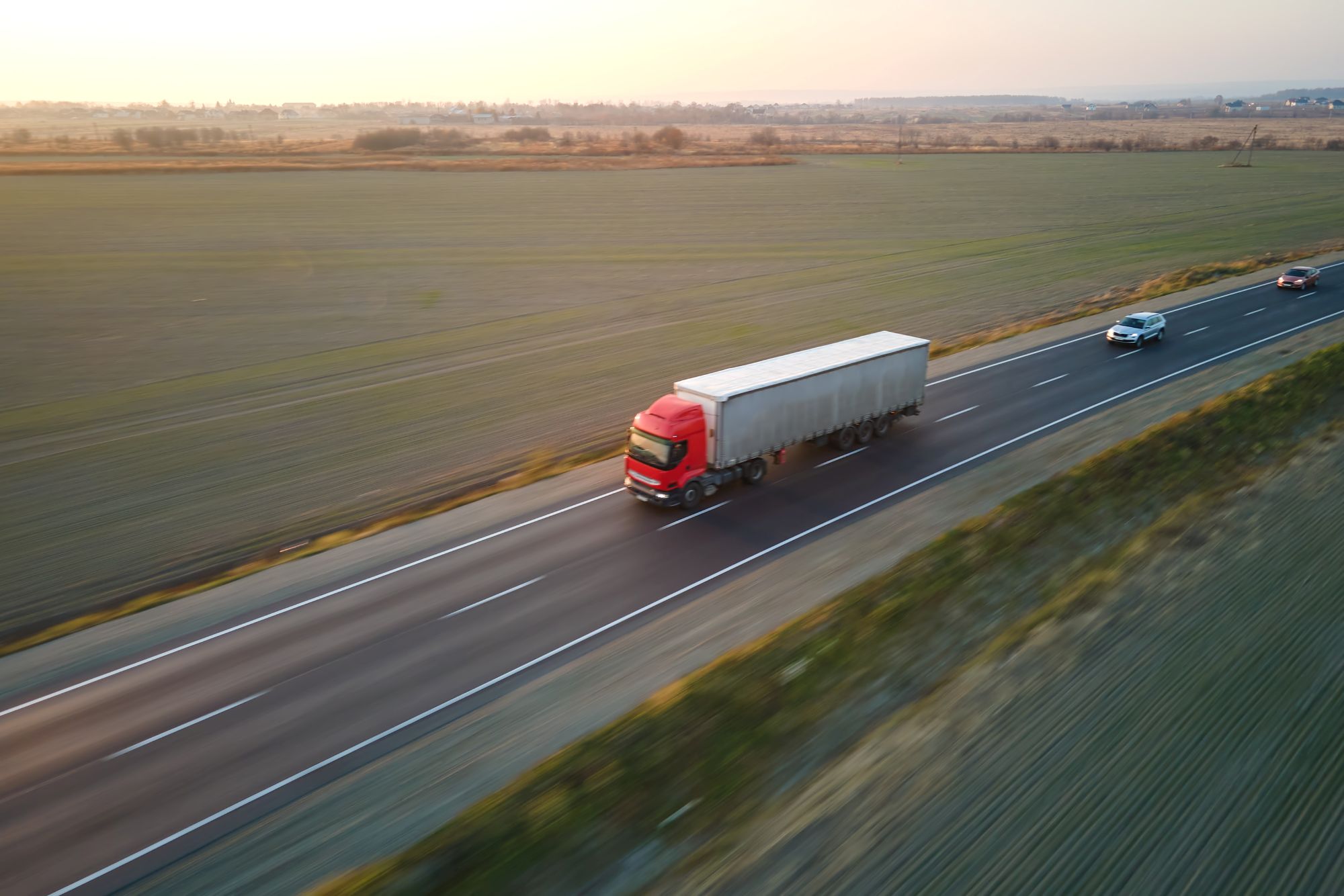
Miranda Blake
Deň vodičov nákladných vozidiel 2025: Dávame vodičom nákladných vozidiel možnosť vyjadriť svoj názor
Vytvorené: 22. 01. 2025
•
Aktualizované: 22. 01. 2025
- januára 2025 je Deň vodičov nákladných vozidiel. Cieľom tohto dňa, ktorý založila spoločnosť NN1 Personnel (náborári a dodávatelia vodičov nákladných vozidiel v logistickom priemysle), je osláviť vodičov a všetko, čo robia pre hospodárstvo a spoločnosť.
Bez vodičov nákladných vozidiel, ktorí v tejto úlohe často zažívajú rôzne ťažkosti (vrátane odlúčenia od rodiny a domova, dlhého pracovného času a cestovania v extrémnych poveternostných podmienkach), by sme boli bez našich potrebných výrobkov a pohodlia. V posledných rokoch, ako aj predtým, boli skutočne hrdinami - pandémia bola len jedným z príkladov.
Je len na vás, ako si tento deň pripomeniete. Personál NN1 odporúča prejaviť láskavosť, napríklad poskytnúť vodičom teplý nápoj alebo sa s nimi porozprávať.
V SNAP sa vždy snažíme dať vodičom nákladných vozidiel možnosť vyjadriť svoj názor. A presne to robíme aj pri príležitosti tohtoročného Dňa vodičov nákladných vozidiel. V nadväznosti na nedávny príspevok na našej Facebookovej stránke, v ktorom sme sa pýtali na nedostatok vodičov a na to, ako zabezpečiť, aby mladí ľudia mali chuť nastúpiť do tohto odvetvia, vyzdvihujeme niektoré komentáre vodičov nákladných vozidiel, ktoré ukazujú ich skutočné skúsenosti - od výziev, ktorým čelia, až po to, čo na svojej práci milujú.
Rovnováha medzi pracovným a súkromným životom
Kľúčovým bodom, o ktorom vodiči hovoria, je to, ako táto úloha ovplyvňuje ich osobný život, napríklad, že nemôžu byť pri dôležitých životných momentoch, že musia spať v kabíne a že peniaze nestojí za to, aby sa obetovali.
"Šoférovanie nákladných áut bolo vždy zle platené, dlhý pracovný čas a takmer žiadny spoločenský život. Dnešní mladí ľudia nebudú znášať hlúpy pracovný čas, pretože väčšina z nich má život mimo práce. "
"Neodporúčam to, pokiaľ to nemáte v krvi. Nie je to ako bežná práca, je to spôsob života. Musíte pochopiť, do čoho idete. Nemáte pravidelný čas začiatku a konca práce ako v továrni. Všetko sa odvíja od povahy práce. Očakáva sa od vás, že budete robiť 15-hodinové zmeny a noci v kabíne, pretože si to práca vyžaduje - a kašlete na svoj domáci život. "
"70 hodín týždenne v priemere za 50 tisíc libier ročne už za to nestojí. Minimálna mzda rýchlo dobieha priemernú mzdu vodiča kamióna, takže budem robiť nadčasy vo fabrike za podobné peniaze a každý večer uvidím svoju ženu. "
"60/65 hodín týždenne, 3/4 noci vonku, žiadny spoločenský život - za peniaze, ktoré zarobíte, môžete rovno skladať regály v Aldi a mať svoj život. Noví vodiči, ktorí začínajú šoférovať, nechcú toľko hodín a nocí za mizerný zárobok, fakt. Takže keď spoločnosti začnú vodičom platiť viac, začnú ich získavať. "
"Koľko ľudí, ktorí začali v rovnakom čase ako ja, pokračovalo v tomto odvetví? Koľko manželiek už nebavilo nevidieť svojich manželov? Koľkých vodičov už nebavilo nevidieť svoje manželky a deti? "
"Prečo by mladí vodiči mali vstúpiť do odvetvia? Dlhý pracovný čas, slabý plat - môžu zarobiť lepšie peniaze a mať spoločenskejší život, ak sa vyškolia na niečo iné. Pre mňa je už bohužiaľ neskoro. "
Štatistiky potvrdzujú spätnú väzbu. Zistilo sa napríklad, že vodiči nákladných vozidiel pracujú každý týždeň v priemere 48 hodín - v porovnaní s 37,5 hodinami pre všetkých zamestnancov je to o podstatných 28 % viac. A tak nie je prekvapujúce, že len tretina vodičov mala pocit, že ich zamestnávatelia podporujú rovnováhu medzi ich pracovným a osobným životom. Nie je ani šokujúce, že takýto významný počet ľudí opustil tento sektor, vrátane 67,21 % mladých ľudí do 30 rokov, ktorí zavesili na klinec svoju vysokú výbavu do jedného roka od pandémie.
Život po nákladnej doprave
Niektorí z tých, ktorí sa vyjadrili, sa presunuli z tohto odvetvia do iných úloh, ktoré ich robia šťastnejšími.
"Dostať väčší plat v továrni, kde sa obrábajú súčiastky... a vedieť, kedy idem a kedy idem domov, tak to je hračka. "
"Môj vodičský preukaz a preukaz spôsobilosti len tak ležia v peňaženke. Teraz učím ľudí šoférovať autá. "
"Nenechajte si to ujsť. Licencia stále platí. Nechajte CPC ísť. Mám toho dosť. "
"Už roky pracujem v prvej triede a nevrátil by som sa k nej, pretože v továrni môžem zarábať rovnaké peniaze a mať rodinný život. Už to za to nestojí!"
"Vrátil som sa k šoférovaniu autobusov, pretože tam, kde žijem, je to lepšie platené na hodinu. Po 15 rokoch šoférovania nákladných áut úplne milujem osemhodinové zmeny. Človek si neuvedomuje, o čo prichádza, keď je mimo práce, kým to znova nezažije. "
Po stopách rodiny
Ale iní sa zamýšľali nad peknými spomienkami na jazdu v nákladných autách so svojimi otcami v detstve, ako aj nad jej hodnotou a nad tým, ako ich táto skúsenosť viedla k tomu, aby sa po ukončení vzdelania sami zapojili do tohto odvetvia.
"Myslím si, že priemysel masívne nemyslí na to, ako boli vychovávaní 21-roční ľudia. Kedysi chodili so svojimi otcami na kamióny. Chlapci v kamióne rozvíjali rovnako veľa mozgových schopností, ale pozerali sa na čísla na ceste. "
"Keď prestali mať deti počas prázdnin možnosť jazdiť s otcami vo vagóne, prestalo to mladých zaujímať. Povedzme si to na rovinu: nie je to práve finančná motivácia, aby sa k nim pridali, však? "
"Nikdy som nemal školské prázdniny, aby som nejazdil s otcom na nákladnom aute. "
"Poznali túto prácu do hĺbky ešte predtým, ako opustili školu. "
"Bolo skvelé ísť s otcom do Belgicka. United Carriers pre agentúru Protem Ltd z Kentu. Potom prešiel do Marley Extrusions. Potom a ešte aj teraz som pomocný vodič bez vodičského preukazu - chcel by som ho mať, ale môj zrak nie je dobrý, takže robím ďalšiu najlepšiu vec ako pomocný vodič. Rád sedím vo svojich nákladných autách. "
Vášeň pre prácu
Podobne mnohí nesúhlasili s tým, že nákladná doprava nie je ideálnym zamestnaním - či už kvôli peniazom, alebo len kvôli láske k riadeniu nákladného auta.
"Robím tri noci týždenne za základ 45-tisíc libier ročne. Ukážte mi inú prácu, ktorú by som mohol dostať s dvojtýždňovým školením a ktorá by bola tak platená!"
"Som v hre na tankeroch už takmer 49 rokov a stále robím víkendy vo veku 74 rokov s jednou nocou týždenne a môžem vás uistiť, že v tomto odvetví je nedostatok dobrých mužov. Veľa dobrých mužov zomrelo predčasne. Keby som mohol, určite by som to všetko zopakoval. "
"Je to povolanie, ktoré sa vám buď páči, alebo nie. Rád som ju robil dlhé roky a bol som preč 4-6 týždňov v kuse. Veľa môže závisieť od toho, do akej spoločnosti nastúpite. V tej mojej som bol 32 rokov. "
"V 19 rokoch som získal vodičský preukaz na ťažké nákladné vozidlá. Už takmer tri roky sa venujem trampingu - milujem ho. "
"50 % vodičov nechcelo byť preč a nikto nechcel byť preč cez víkendy. Viac-menej všetci mi hovorili: "Prešvihol si najlepšie roky, synku, nájdi si inú prácu". Pravdou bolo, že peniaze neboli zlé, ak ste si odpracovali hodiny, a ak ste tam boli pre peniaze, mohli ste si dobre zarobiť. Ak ste chceli ľahký život v najlepších nákladných autách, veľa odpočinku a aby sa o vás firma starala, boli ste v nesprávnej práci. "
"Vždy som odpracoval viac ako 60 hodín týždenne a mal som z toho dobrý a pohodlný život a predovšetkým veľmi dobrú, chápavú a silnú ženu po svojom boku. A áno, urobil by som to všetko znova. "
Uznanie pre vodičov nákladných vozidiel pri príležitosti Dňa vodičov nákladných vozidiel
Všetky tieto komentáre jasne ukazujú, že hoci vodiči nákladných vozidiel určite čelia výzvam, stále je tu veľa dôvodov na lásku a pre niektorých je to kariéra, ktorú budú robiť radi po celý život - preto je logické, že približne polovica vodičov sa cíti s touto prácou spokojná.
Myslíme si, že je veľmi dôležité, aby si každý uvedomil, čo všetko pre nás vodiči nákladných vozidiel robia. Žiaľ, niektorí vodiči poukázali na to, že pociťujú výrazný nedostatok rešpektu. Nemalo by to tak byť - mali by byť uznávaní za to, čo robia, aby nám poskytli všetky základné životné potreby. Ako povedal jeden vodič nákladného auta:
"Diaľnice sú síce žilami krajiny, ale kamióny sú našou krvou. Bez nich by sme nemali ani potraviny, nieto ešte tovar. "
Preto v tento Deň vodičov nákladných vozidiel - a vlastne každý iný deň - prosíme všetkých, aby ocenili tých, ktorí sú pre nás na cestách. Vodiči nákladných vozidiel si zaslúžia pochvalu, úctu a oveľa viac.



